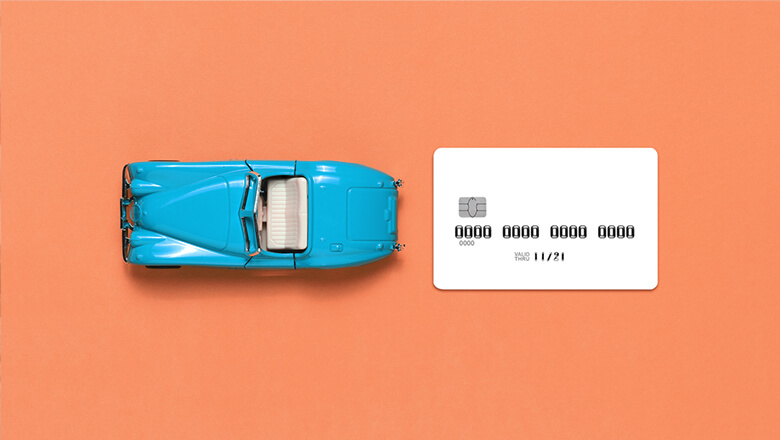What Is Mortgage Forbearance?
Some mortgage servicers allow borrowers with unforeseen financial troubles to trim or pause mortgage payments short term through a process called mortgage forbearance. So if a homeowner hits a snag and can’t pay, a sudden hardship — such as temporary unemployment or health issues — doesn’t necessarily lead to credit damage or foreclosure.
The goal of forbearance is to give the borrower a chance to become more financially stable. If this sounds like something you need — or if you simply want to read up on forbearance so you’ll be prepared if the unexpected happens — this guide is for you.
Identifying Your Loan Servicer
If you want to ask if mortgage forbearance is an option, you’ll first need to determine your mortgage servicer, which may not be the lender that originally provided the loan. The name of the servicer typically appears on the bill that arrives in the mail or on the website where mortgage payments are made. You could also try looking up your servicer on the MERS® website. Those who think they may have Fannie Mae or Freddie Mac-owned loans can check online as well.
💡 Quick Tip: Have you improved your credit score since you made your home purchase? Home loan refinancing with SoFi could get you a competitive interest rate with lower payments.
First-time homebuyers can
prequalify for a SoFi mortgage loan,
with as little as 3% down.
Questions? Call (888)-541-0398.
What Does Mortgage Forbearance Really Mean and How Does It Work?
During forbearance, interest is not paid but accrues and is later added to the loan balance. All suspended payments also will need to be paid back. If rough seas are rising around you, it doesn’t make much sense to wait to ask for a lifeline. Similarly, if you’re experiencing a hardship, before missing even one mortgage payment, it would be smart to contact your servicer to ask about options, go over the details, and formalize an agreement.
It’s important to ask whether skipped payments are expected to be paid in a lump sum when the forbearance ends, paid in installments, or added to the end of the loan term. Forbearance is often only granted after a financial review to gauge the likelihood that you can resume regular payments at the end of the forbearance period.
Do You Have to Pay Extra Interest for Forbearance?
Typically no. The interest rate and amount of interest follow the loan agreement.
The loan interest might change only if the lender extends the loan term or increases the loan interest rate.
Pros and Cons of Mortgage Forbearance
| Pros | Cons |
|---|---|
| It’s a chance to avoid foreclosure | Often higher monthly payments after forbearance |
| Usually has no impact on credit | You normally have to prove hardship |
| Good for short-term hardships | Interest accrues |
| Missed payments must be repaid |
Federally Backed and Private Mortgage Options
Thanks to the CARES Act, both conventional and government-backed mortgages were eligible for forbearance due to Covid-related hardships. But these programs wound down in the fall of 2023. This means forbearance programs are specific to your lender, as they were prior to the pandemic. So whether you have a conventional home loan or government-insured home loan (an FHA, USDA, or VA loan), if you’re experiencing hardship it’s important to contact your loan servicer as soon as possible to discuss options and the exact terms.
Lenders typically ask for documentation to prove the hardship, including current monthly income and expenses. They also will want to know whether your hardship is expected to last six months or less (short term) or 12 months (long term). Depending on the lender, you may need to call to discuss options or might be able to start the forbearance request process online.
Coming Out of Forbearance
When a forbearance period ends, how will the amount that was paused be repaid? The answer depends on the lender and type of loan.
• It’s possible that the sum unpaid during the forbearance period will be due in full once a loan is out of forbearance.
• That is not true with a Fannie Mae, Freddie Mac, FHA, USDA, or VA loan. With these loans, the amount that was suspended will not be required to be paid back in a lump sum.
• Other lenders may extend the loan period, adding the forbearance dollars to the end of the loan.
• Yet other lenders may raise monthly payments once a loan is out of forbearance to make up the amount that wasn’t being paid during the mortgage forbearance period.
Deferred Mortgage Payments and Credit Scores
Even one missed mortgage payment will dent your credit scores, and late payments will stay on your credit history for seven years. Forbearance, on the other hand, usually does not show up on credit reports as negative activity.
Alternatives to Mortgage Forbearance
For those who can’t afford to pay their mortgage, mortgage relief options like these may be available.
Mortgage Loan Modification
If you cannot refinance your loan, loan modification is an option. Loan modification changes the original terms of your mortgage long term or permanently. The point is to make your payments more manageable, usually with a lower interest rate, a longer loan term, or both. If the length of the loan is extended, you’ll probably pay less per month than before but pay more interest over the life of the loan.
When reaching out to your loan servicer to discuss loan modification, it’s wise to ask about any fees for the modification; what the new repayment term, rate, and payments will be; and whether the modification is temporary or permanent. As with forbearance, evidence of financial hardship and a letter will be required.
Mortgage Refinancing
Refinancing a mortgage is altogether different from modifying a home loan. When refinancing a mortgage loan, you’re applying for a brand-new loan that would then be used to pay off outstanding home debt. You might qualify for a lower interest rate or get a longer loan term. Closing costs apply.
If you’re struggling financially, it might be difficult to qualify for refinancing, but it doesn’t hurt to get prequalified, which takes mere minutes. You may find that you’re eligible for a refinance during or after forbearance, according to Fannie Mae. (If you do this, make sure you seek mortgage prequalification vs. preapproval and that you understand the difference.)
Draw on Savings
In an emergency, you may want to consider tapping your emergency fund or retirement account. If you have a Roth IRA, remember that you can withdraw contributions at any time tax- and penalty-free. (If you withdraw the earnings on the account, however, you may be subject to taxes, a 10% penalty, or both.)
You may qualify for a hardship distribution from a 401(k) and permanently withdraw money if your plan allows it. Your employer will likely deduct 20% upfront for taxes. The 10% penalty tax is waived if the hardship withdrawal is for a handful of specific reasons.
Sell Your Home
If the weight of mortgage payments becomes too much, you could sell your house and pay off the mortgage.
If the proceeds would fall short, an option is a short sale. Your lender decides whether or not to OK the sale or whether to work out a plan, like allowing you to make interest-only payments for a set amount of time or extending the loan term.
Declare Bankruptcy
Another option to stave off foreclosure is filing for Chapter 13 bankruptcy. Chapter 13 allows a borrower up to five years to pay missed mortgage payments. So instead of having to make one giant payment, if that’s what is being asked for, a homeowner could break up the payments over 60 months.
If, for example, a homeowner accepted a 12-month forbearance on monthly payments of $2,400, a Chapter 13 plan could allow the $28,800 in arrears to be paid over 60 months. Other debts can also be restructured and possibly discharged under Chapter 13.
💡 Quick Tip: Generally, the lower your debt-to-income ratio, the better loan terms you’ll be offered. One way to improve your ratio is to increase your income (hello, side hustle!). Another way is to consolidate your debt and lower your monthly debt payments.
The Takeaway
Mortgage forbearance allows paused or reduced payments for borrowers experiencing a sudden hardship that is expected to last six months or less. It’s one way to ward off foreclosure. It’s not the only way, however, so it’s worth consider forbearance as well as other options such as a loan modification or mortgage refinance.
SoFi can help you save money when you refinance your mortgage. Plus, we make sure the process is as stress-free and transparent as possible. SoFi offers competitive fixed rates on a traditional mortgage refinance or cash-out refinance.
A new mortgage refinance could be a game changer for your finances.
FAQ
Does forbearance hurt credit?
No, if you abide by all the terms of the agreement. Skipped payments during a forbearance period are typically not reported to the credit bureaus.
Is mortgage forbearance a good idea?
If the financial hardship is short term, forbearance could provide a welcome respite until you get back on your feet. And it sure beats foreclosure.
Does forbearance affect getting a new mortgage?
It depends. For Fannie Mae- and Freddie Mac-backed loans, if you paid everything back in a lump sum after forbearance, you can proceed. If not, you will need to make three consecutive payments under your repayment plan or payment deferral option.
FHA loans have a waiting period that varies by loan type if you’ve missed any payment in forbearance, even if you paid everything back in a lump sum.
SoFi Loan Products
SoFi loans are originated by SoFi Bank, N.A., NMLS #696891 (Member FDIC). For additional product-specific legal and licensing information, see SoFi.com/legal. Equal Housing Lender.
SoFi Mortgages
Terms, conditions, and state restrictions apply. Not all products are available in all states. See SoFi.com/eligibility-criteria for more information.
Financial Tips & Strategies: The tips provided on this website are of a general nature and do not take into account your specific objectives, financial situation, and needs. You should always consider their appropriateness given your own circumstances.
External Websites: The information and analysis provided through hyperlinks to third-party websites, while believed to be accurate, cannot be guaranteed by SoFi. Links are provided for informational purposes and should not be viewed as an endorsement.
Third-Party Brand Mentions: No brands, products, or companies mentioned are affiliated with SoFi, nor do they endorse or sponsor this article. Third-party trademarks referenced herein are property of their respective owners.
Tax Information: This article provides general background information only and is not intended to serve as legal or tax advice or as a substitute for legal counsel. You should consult your own attorney and/or tax advisor if you have a question requiring legal or tax advice.
SOHL0124020
Read more



